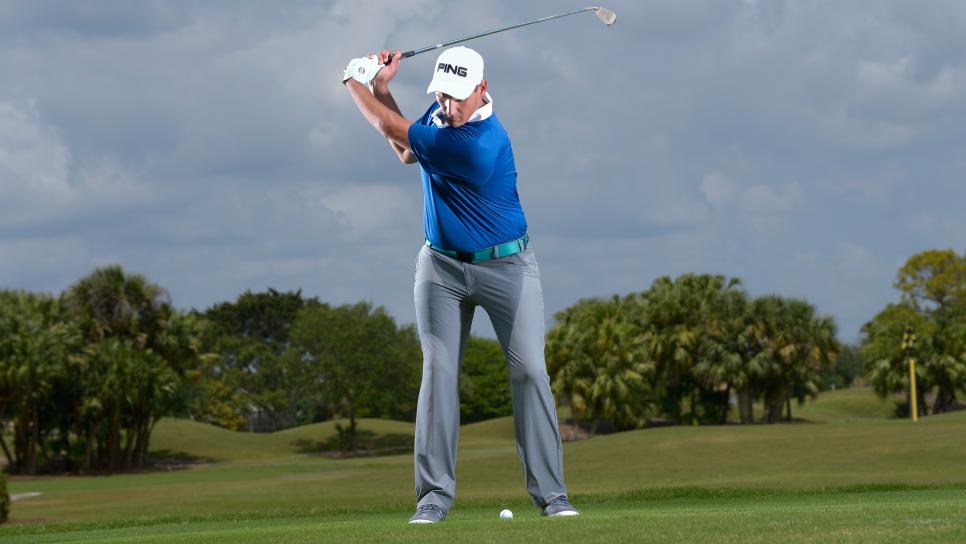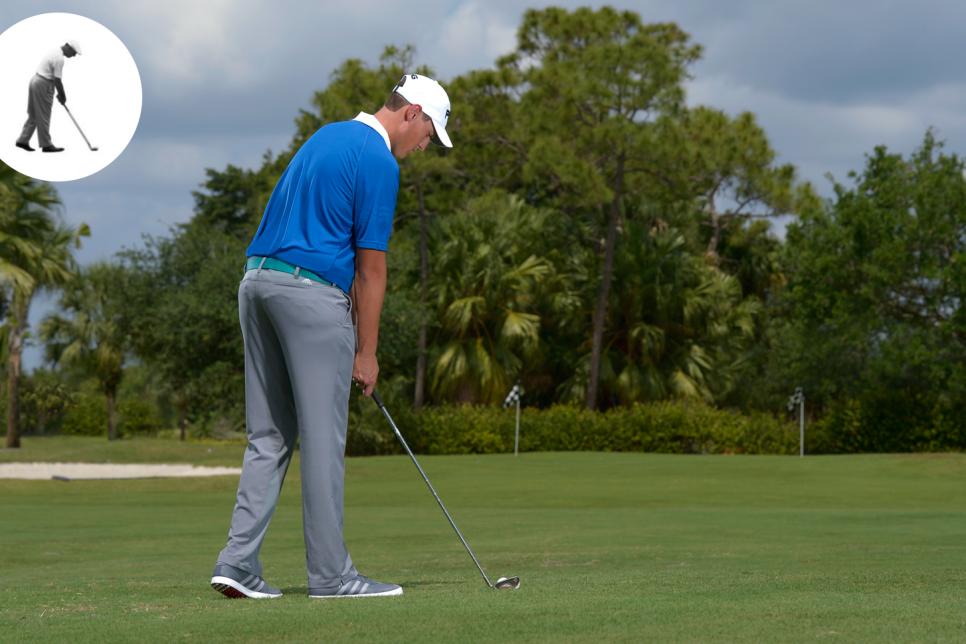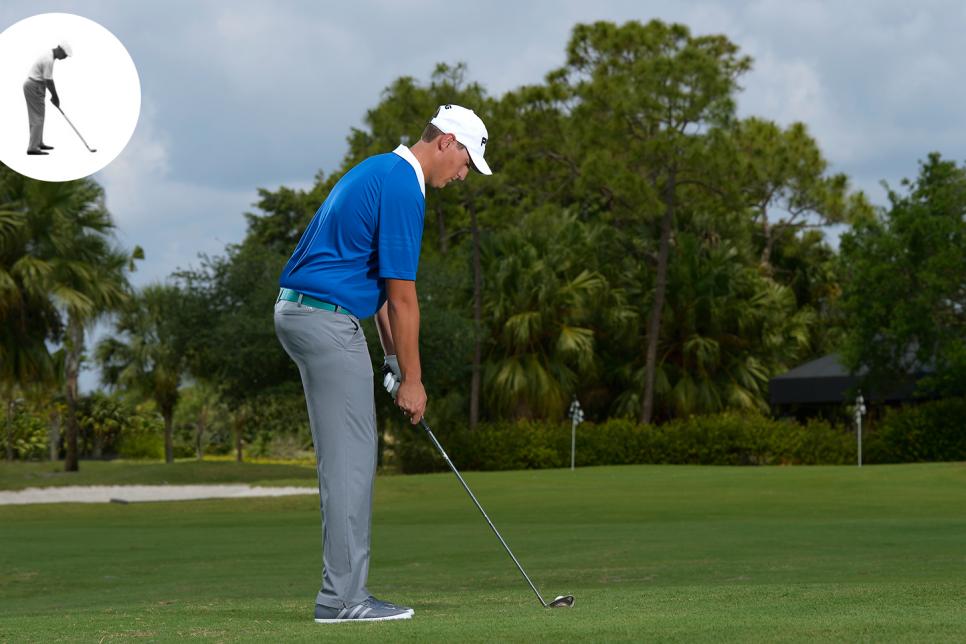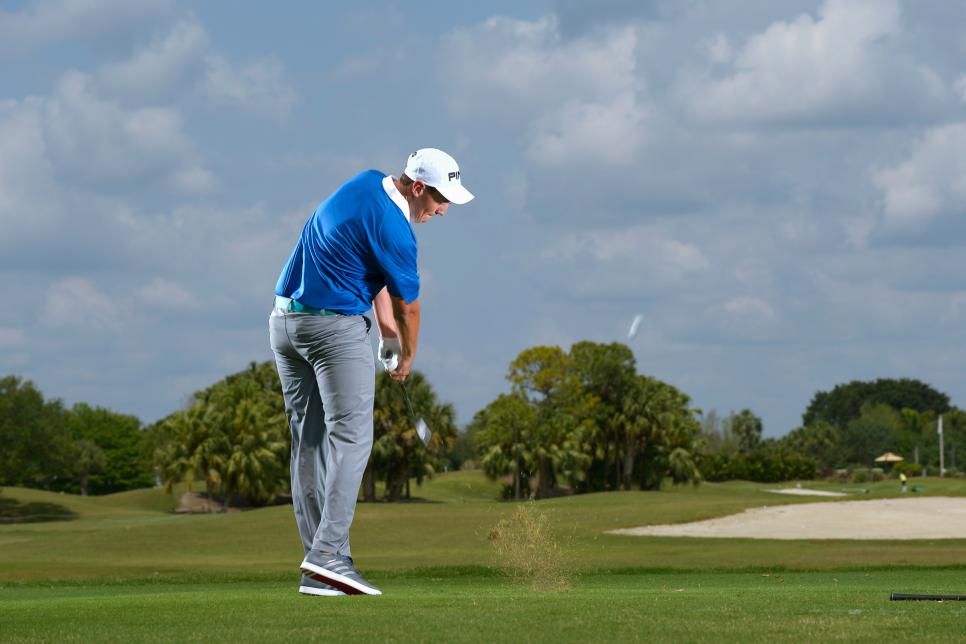Instruction
Put Your Swing On Automatic
Let's get right to the point. In my 1975 book, One Move to Better Golf, the motion under discussion was how the left shoulder should turn to start the backswing. I actually didn't care for the term "move," but the editors of Golf Digest loved it. I prefer "trigger" or "starter button" because this move initiates the action. When the left shoulder starts, it swings the arms and hands back in a rhythmic motion, and they in turn help pull the shoulder around and into the backswing. This concept is as valid today as it was 40 years ago.
The trigger is an easy way to get coiled or wound. It's like pushing a boulder off the top of a hill: You start it rolling, and the momentum keeps it going. This trigger puts your swing on automatic because everything else falls into place. Not only does it create the right backswing sequence, it prompts the lower body to start the downswing and sets the club on an inside path to impact. That's how you create power and hit a draw.
There are four things that occur on the backswing if you start with the left shoulder:
1) The body stays in the area it started, so you remain centered for solid contact.
2) The radius of the swing, which is from the left shoulder to the left hand, is fully extended, unifying the upper left side.
3) Your swing is on the correct plane.
4) You achieve a full body coil.
With a proper grip and setup, these four fundamentals combine to simplify your quest for solid contact and maximum power. They lead to a reflexive or automatic downswing, in which the clubhead lags and then fires through impact. If you get the start of the swing right, which I'll explain here, you'll experience extraordinary results.
EDITOR'S NOTE: Forty years ago, Golf Digest published a series of articles by Carl Lohren adapted from his best-selling book One Move to Better Golf. Lohren, a highly respected player, became an instant hit as a teacher. Wrote Deane Beman, the former U.S. Amateur champion and PGA Tour player who later became tour commissioner: "Carl knows more about the golf swing than anybody living... [His teaching] will appeal to an intelligent, organized mind because it provides something you can believe in." In this article we revisit the original piece, and Lohren, now 78 and still teaching full time, adds some updates to help you get your swing on track—and become automatic.

IT STARTS WITH THE PRE-SHOT ROUTINE
Before I tell you about the backswing trigger, you need to learn the correct way to get into your setup. I model it after the legendary Ben Hogan. He always started by aligning his shoulders well to the left of the target, and by the time he squared his stance, his shoulders were still 15 to 17 degrees open to the target line. This allowed him to start the backswing by moving his left shoulder out (in front of him) and around, which got his arms and hands on a long route to the top.
To understand what the long route is, consider the opposite: the short route. Imagine your shoulders in a closed position at address. When the left shoulder turns back from there, the arms and hands go to the inside and arrive at the top rather quickly. That's the short route, and it causes the hands, arms, right shoulder or right hip to start the downswing, usually by "throwing" the club away from the body on an out-to-in path. The result typically is a weak slice.
With the Hogan swing—starting with the move I'm teaching here—the hands and arms are still going back when the lower left side of the body involuntarily starts forward. In effect, the long route allows the lower body to get a head start on the downswing. There's a mental requirement to have this involuntary downswing: There has to be a cognizance of the target before the shot begins. It's much like a dog lying in a blind, then seeing a bird flying overhead and suddenly perking up.
Modern players who best demonstrate a similar action are Jim Furyk, Jason Day and Martin Kaymer. Watch how their lower bodies start the downswing while their hands and arms are still swinging back.
The shoulders-open setup is perfectly natural. Because the right hand is slightly lower and out past the left hand on the club at address, the right shoulder is lower and out past the left shoulder. Also, the hips are open about 12 degrees, the shoulders about 17 degrees. This puts the body in a top-to-bottom spiral, ready to start winding up.
GET INTO THE SHOT LIKE HOGAN DID

1) THE PRE-SET
Place your left hand on the club in the correct position. Then stand slightly behind the spot where you'll take your stance, looking at your target. Angle your body 45 degrees toward the target, with most of your weight on your left foot and your right foot pointing at the ball.

2) THE STEP-IN
Take a small step forward with your right foot, about two inches, shifting most of your weight to that foot. The right foot is closer to the target line than it will be at address. While taking the step, move your hands toward each other and the club to the ball. This tilts your shoulders away from the target and keeps them open and sets your sternum over your right foot.
The stance has three requirements: (a) no more than a 30-degree bend of the lower spine; (b) open shoulder and hip alignments; and (c) a six-inch tilt of the shoulders, with the sternum just behind the center of your feet.

3) THE STANCE
Place your left foot in its final position, then set your right foot the same distance from the target line, so your stance is square. Stand as far from the ball as you can provided you don't: (a) alter the 30-degree angle in your lower spine; (b) close your shoulders; and (c) move onto your toes or get tight from your arms reaching.
Adding a waggle and foot movement, you'll have an urge to start the swing. This urge is necessary to create athleticism over mechanics. The routine takes five seconds, but it's vital to making you a better player.

WHAT EXACTLY IS THE 'ONE MOVE?'
I want you to think only about your left shoulder starting the swing. During the takeaway, turn your left shoulder out and back. Imagine a point in space that's about four inches in front of you at address, floating halfway between your left shoulder and your chin. Turn your left shoulder to that point on the takeaway, and the rest of your backswing will follow correctly.
When the left shoulder swings out, the right shoulder pushes back. This creates the torque of the left-side back muscles early in the swing, because the hips are open and the shoulders are closing when they turn back. This ultimately will lead to the club coming into the ball on an inside path for maximum clubhead speed.
From this shoulders-open position, the hands stay in front of the body for the first half of the backswing. Compare this to the short route I described earlier, where the hands and arms move quickly to the inside—they don't stay in front. When they do, it takes longer for them to get to the top—the long route—and the back muscles have a chance to wind up. That allows the left hip to start a lateral movement toward the target before the hands complete the backswing. It keeps the hands from "hitting from the top," a common fault. Do it correctly, and the right side stays passive. The result is a solid strike because the body leads the club, creating a delayed hit. Most bad shots come from an early hit from the right side.
When you swing back properly and let the left leg and hip start moving laterally before the hands reach the top, you double-torque the left side of the back. The lower body moves away from the upper body, increasing the coil. Then the club naturally falls onto an inside path to impact, so you can accelerate through the ball, start it to the right and hit a draw (above). Best of all, you're putting your swing on automatic.